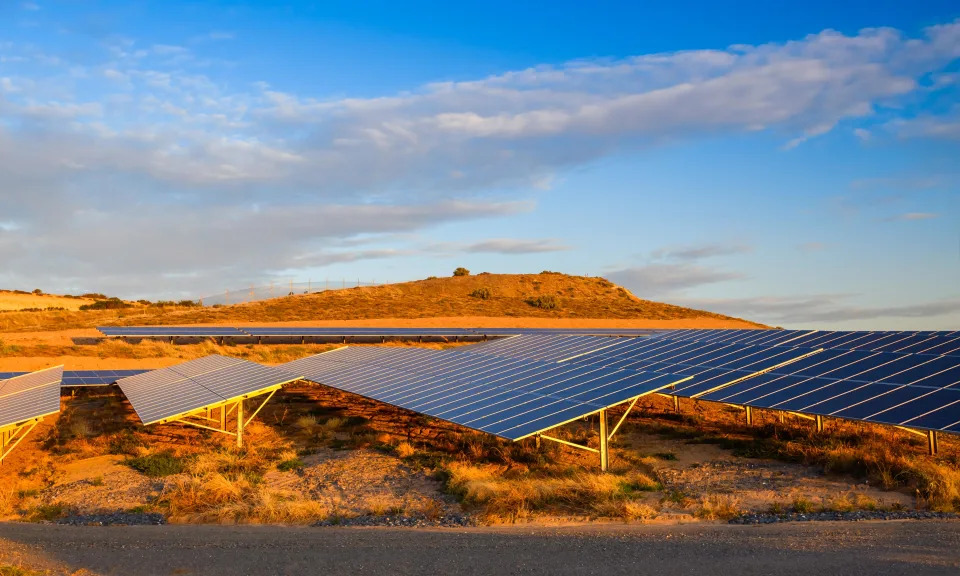Peter Hannam
Wed, 8 March 2023

Investment in large-scale renewable energy and storage accelerated in the final three months of 2022, creating the largest quarterly investments for more than four years, but the pace remains inadequate, the Clean Energy Council says.
Developers made financial commitments to renewables and storage totalling $4.29bn in the December quarter, a 10-fold increase on the previous three months.
The year-end spurt lifted investment commitments to $6.2bn for 2022, a 17% increase on the previous year.
“While the uptick is encouraging, one quarter doesn’t mean a trend,” the council’s chief executive, Kane Thornton, said. “Australia is deploying new large-scale generation – wind and solar farms – more slowly than needed to reach the 82% target for renewable energy on the National Electricity Market” by 2030.
Related: Japan to spend $2.35bn on turning Victorian Latrobe Valley coal into ‘clean hydrogen’
“The fact remains that the rolling quarterly average investment over 12 months has not risen above $2bn since the second quarter of 2019,” Thornton said.
The investment details come a fortnight after the Australian Energy Market Operator warned of potential “reliability gaps” in the national power grid without “urgent” action in coming years to encourage more clean energy capacity and storage.
An indication of how pressure on the grid can spike came on Monday when the first major heatwave for eastern New South Wales for more than a year broke electricity demand records for March by almost a 1,000 megawatts, the AEMO said.
Thornton said the jump in investment was a response to the “more positive political and policy environment” and greater coordination by governments.
Sign up for Guardian Australia’s free morning and afternoon email newsletters for your daily news roundup
Still, much of the expansion in commitments was the result of the financial signoff for the 756MW stage one of the Golden Plains windfarm, north-west of Geelong. That first stage alone was worth $2bn, the council said.
The project also accounted for more than a third of 1923MW of new installed capacity that reached financial close during the quarter. The tally was up about four-fold from the previous quarter, lifting the rolling 12-month average to its highest level in five quarters.
The industry is relying on fewer but larger projects if recent trends are a guide.
Last year, 15 generation projects for a total of 3.57 gigawatts of installed capacity secured financial approval. In 2021, the tally was 23 projects for 3.06GW, the council said.
New South Wales led with its five projects accounting for 1,559MW in 2022. Victoria claimed second spot with its four new projects adding 945MW of new capacity, ahead of Queensland’s three projects with 495MW.
Related: Tracking Australia’s progress on the climate crisis and the consequences of global heating
On the storage front, South Australia’s 800MW-hour Blyth battery was the largest single project reaching financial close in the December quarter.
For the year as a whole, investors signed off on 12 projects for a total of 7,374MWh of storage, more than double the 2,900MWh – also for 12 projects – in 2021, the council said.
Delays of at least a year in Snowy Hydro’s giant 2.0 pumped hydro scheme and its gas- and hydrogen-powered Kurri Kurri plant have lately added to worries about power supplies, particularly as ageing coal-fired power plants close.
AGL Energy’s Liddell coal plant in the Hunter Valley – now operating just three of its four units – will be the next to shut down, with the remaining 1,260MW scheduled to be switched off on 28 April.
Thornton called for the Renewable Energy Target to be increased and extended beyond its current 2030 deadline to support the sector.
“We know that to truly have an effect on long-term energy prices, Australia needs the security provided by low-cost electricity direct from solar and wind and reduce our reliance on increasingly expensive gas and unreliable coal generation,” he said.
No comments:
Post a Comment